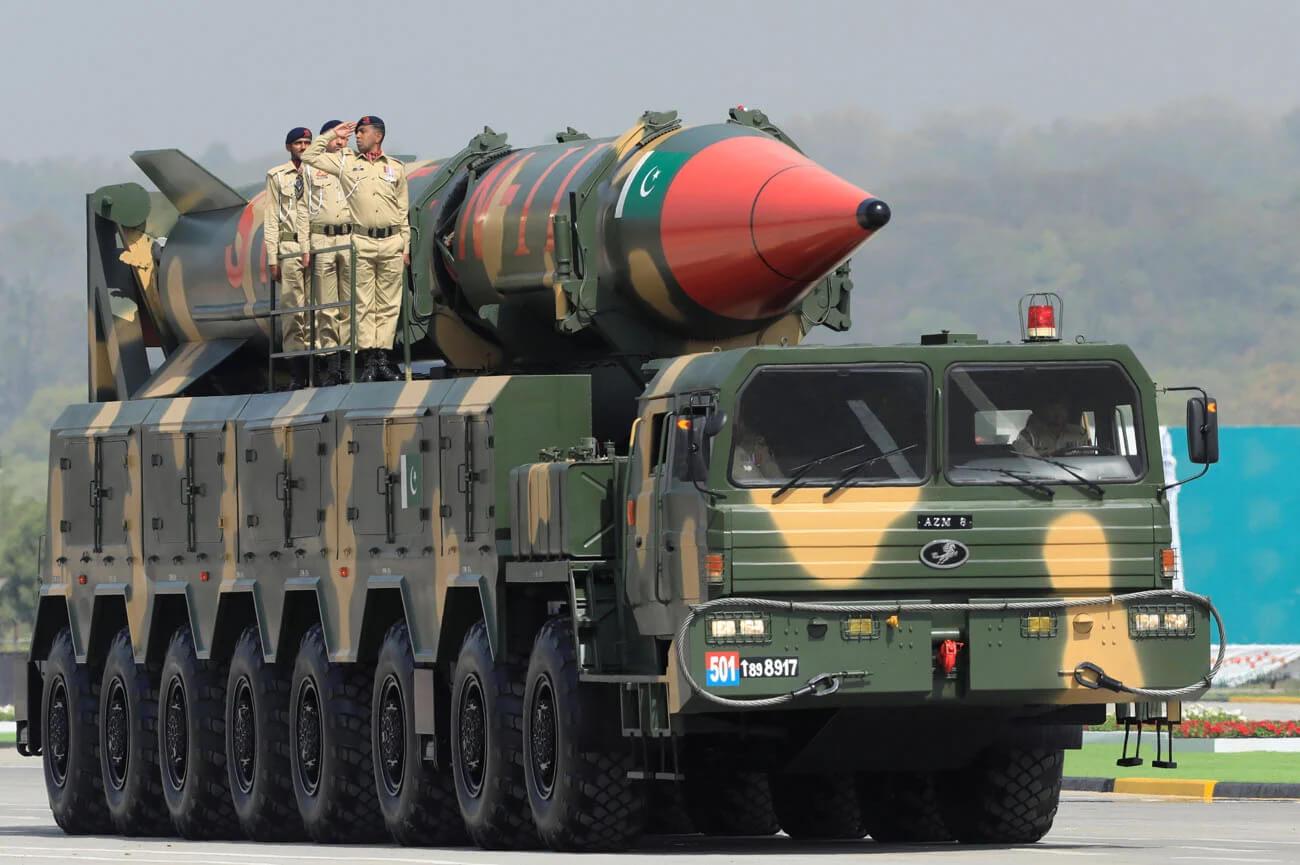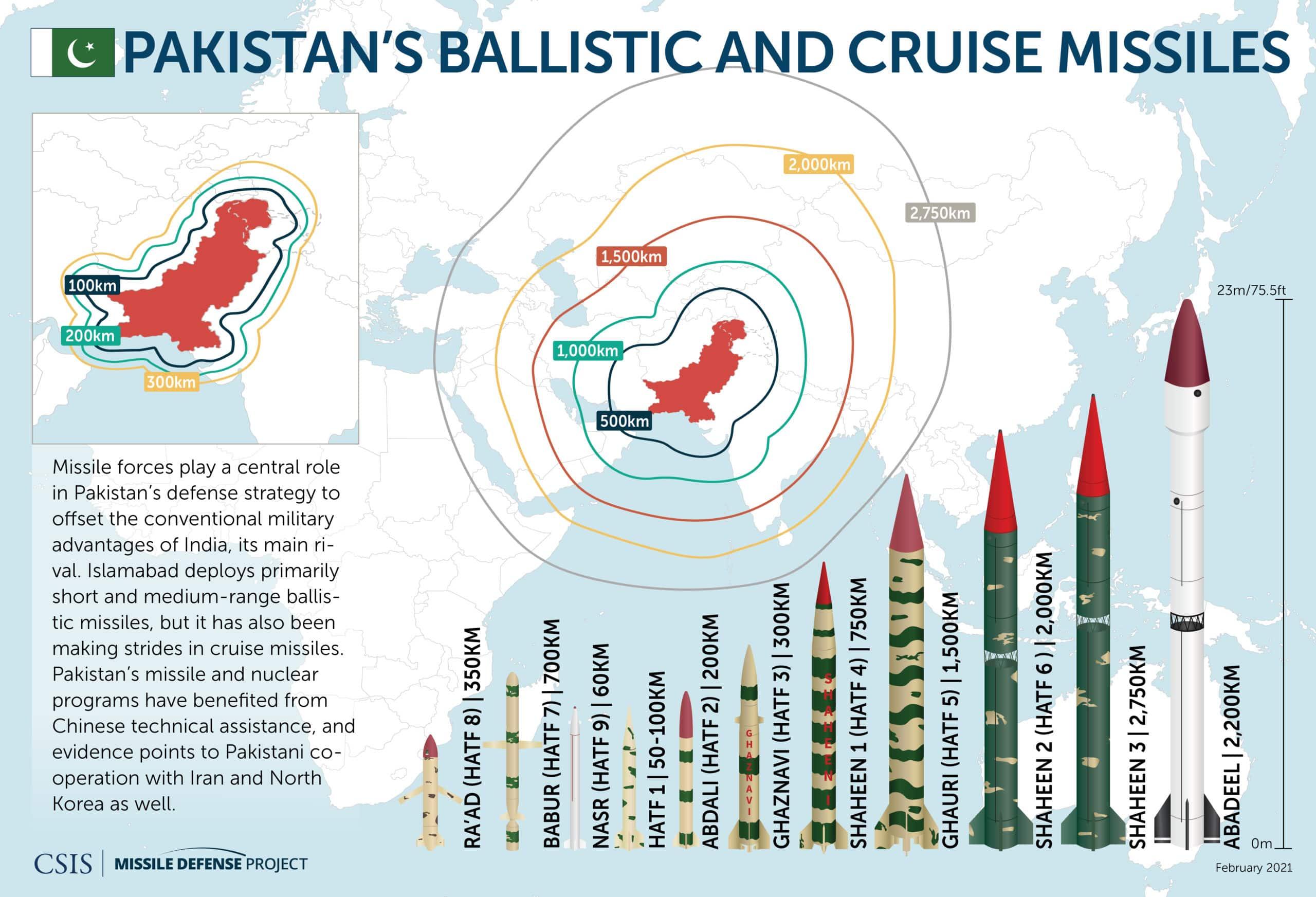
Pakistan's Missile Capabilities and its Range Details
Pakistan's defense budget is not equal to India's, as their economy is better than Pakistan's; however, Pakistan has a wide range of nuclear and non-nuclear missiles that can cover a range even outside of India as well. Moreover, Pakistan has equal capabilities compared to India, which is more than 5 times the population and size of Pakistan. Moreover, Pakistan's nuclear capabilities are driven by national defense and the purpose is to only defending the nation. Pakistan believes that its nuclear weapons are for acts of defense of the nation and its protection.
Experts say that if Pakistan did not have these nuclear capabilities, then Pakistan would have been suffering like Ukraine, and India would act like Israel against Gaza, which is a genocide and a war crime. Moreover, if Pakistan did not have nuclear capabilities, then India would have tried to act like Israel and kill civilians in Pakistan. However, due to the Pakistan Army's capabilities, passion towards the nation, protecting Pakistan from enemies, and its nuclear assets, India now has to think 1000 times before doing any kind of misadventure against Pakistan.
Pakistan Nuclear Weapons Details
Pakistan began its nuclear weapons journey in January 1972, and at that time the prime minister was Zulfiqar Ali Bhutto. Missile forces play a central role in Pakistan's defense strategy to offset the conventional military advantage of India. Moreover, it is not a hidden truth that India does not want Pakistan to have nuclear capabilities, and India is Pakistan's rival. Pakistan has deployed primarily short-, medium-, and long-range ballistic missiles as well as cruise missiles.
1) Raad (HATF 8)
The Ra’ad (Hatf 8) is an air-launched cruise missile developed by Pakistan. The turbo-jet powered missile can reportedly range 350 km. The turbojet-powered Hatf 8 can reportedly range 350 km. According to Pakistani media reports, the Hatf 8 possesses a “low-altitude, terrain hugging” flight profile and “pinpoint accuracy,” suggesting the presence of an active guidance system.2 It measures 4.85 m in length and 0.5 m in body diameter.
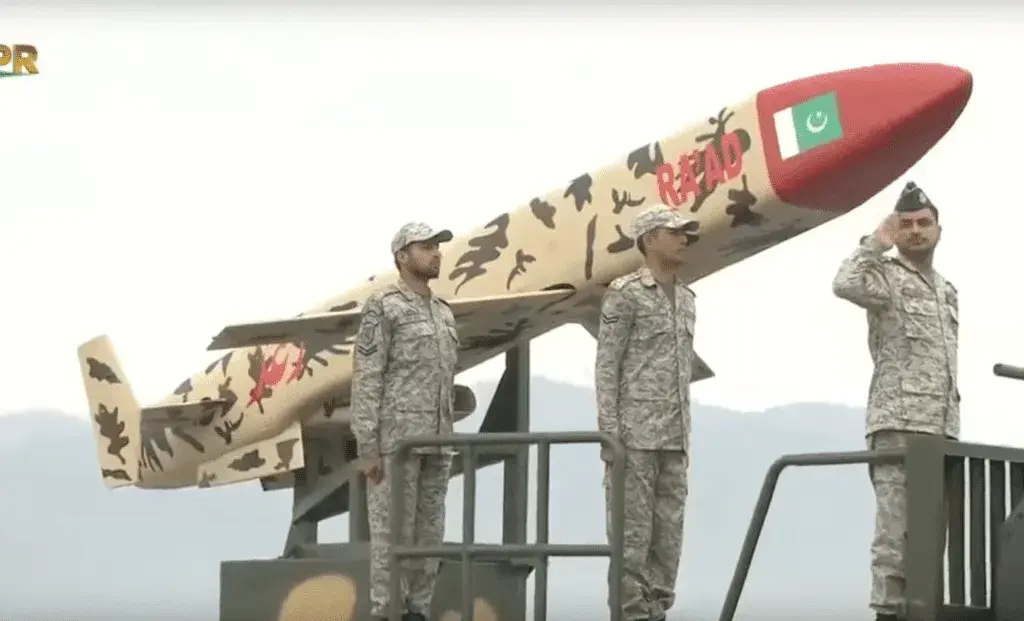
2) Babur (HATF 7)
The Babur (Hatf 7) is a Pakistani ground-launched cruise missile. In upgraded forms, it has a range of up to 700 km and can deliver nuclear and conventional payloads. Pakistan began developing the Babur missile in the 1990s in response to India’s nascent cruise missile program. In a surprise to the U.S. intelligence community, Pakistan first tested the system in August 2005. Pakistan has conducted at least ten Babur flight tests through July 2014. The system reportedly entered service in 2010. The known launch vehicles have all been mobile, land-based platforms. Pakistan began testing a submarine-launched Babur variant, the Babur-III, in 2017.
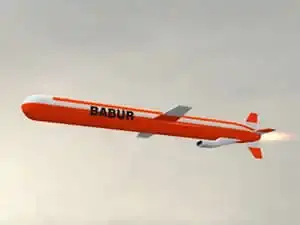
3) The NASR (HATF 9)
The Nasr (Hatf 9) is a Pakistani short-range ballistic missile with a range of 60 – 70 km. Pakistan first revealed the missile in April 2011 as a “quick response” nuclear delivery system. It is derived from China’s WS-2 tactical rocket and was first revealed in April 2011. Pakistan reportedly began developing the Nasr system in the mid-2000s, eventually selecting a design derived from the China Aerospace Science and Technology Corporation (CASC) WS-2 guided rocket. Pakistan first flight tested the Nasr in April 2011, with further tests in May 2012, February 2013, November 2013, September 2014, and July 2017.1 It reportedly entered service in 2013.
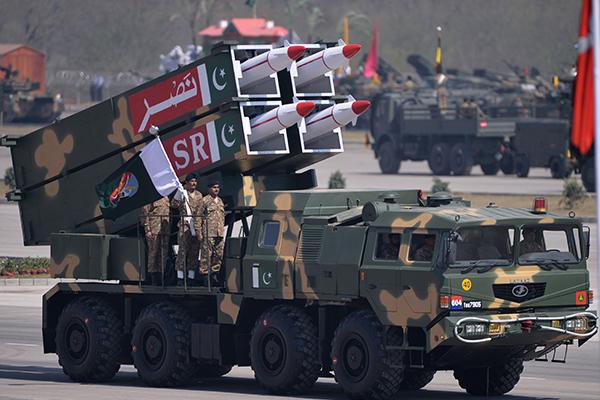
4) HATF 1
The Hatf 1 is a short-range, road-mobile, solid-fueled ballistic missile. There are three versions: the 1, 1A, and 1B. Pakistan first revealed the Hatf 1 missile in 1989. The missile and its variants were likely developed with French and Chinese assistance. The missile body is directly derived from France’s Eridan sounding rocket, with several French companies thought to have cooperated with the Pakistani government. These units were reportedly assembled with substantial Chinese assistance.

5) Abdali (HATF 2) 200 KM range
The Abdali (Hatf 2) is a short-range, road-mobile, solid propellant missile that entered service in 2005.The Hatf 2 featured increased range over the Hatf 1. Its relatively small warhead limits its destructive capability, but its accuracy is sufficient to target military bases and airfields, or critical infrastructure such as power plants and industrial facilities. As displayed in military parades, it is carried on a road mobile Transporter-Erector-Launcher (TEL) vehicle.2 The use of solid propellant and the TEL vehicle make the missile easy to store, transport and fire.

6) Ghaznavi (HATF 3)
The Ghaznavi (Hatf 3) is a Pakistani short-range ballistic missile. It has a range of 300 km and is directly derived from China’s DF-11 short-range ballistic missile.1 Pakistan received significant technical assistance and over 30 DF-11 missiles from China through the early 1990s.Pakistan originally began developing the Ghaznavi/Hatf-3 in 1987, but terminated the program after its purchases of Chinese M-11 (DF-11) missiles in the early 1990s. These were later renamed the Ghaznavi missile.3 China first flight tested the M-11 in 1990, and Pakistan conducted its first known Ghaznavi test in May 2002. The system became operational in 2004.Subsequent flight tests took place in June and December of 2006, February 2008, and May 2010.
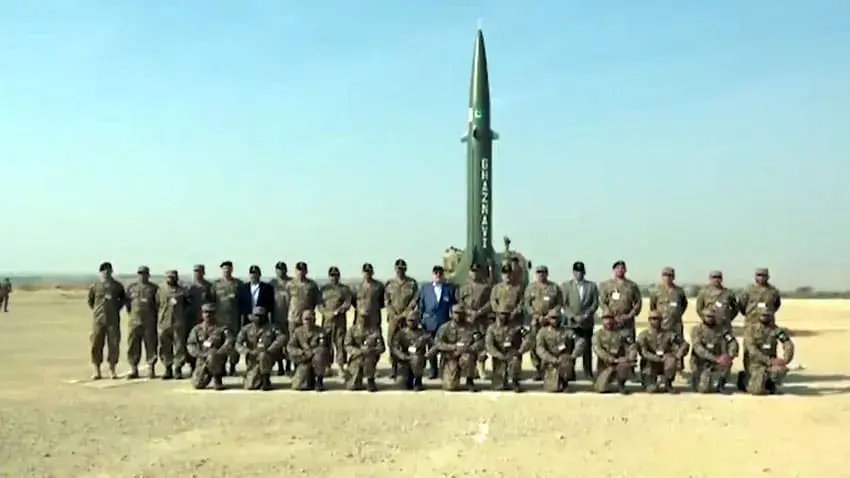
7) Shaheen (HATF 4)
The Shaheen 1 (Hatf 4) is a Pakistani-Chinese short-range ballistic missile. It can launch a payload of 700 – 1,000 kg to ranges of up to 700 km, and its extended-range variant, the Shaheen 1A, ranges up to 900 km. The missile was developed with Chinese technical assistance, and analysts suggest its design may derive from China’s DF-15 system. Pakistan began developing the Shaheen 1 in 1993, and first displayed the missile in March 1999. The system’s first publicly-acknowledged flight test took place in April 1999, though testing may have begun as early as July 1997.2 Subsequent tests took place in October 2002, October 2003, December 2004, November 2006, January 2008, and May 2010. The missile entered service with Pakistan Army Strategic Force Command in March 2003.
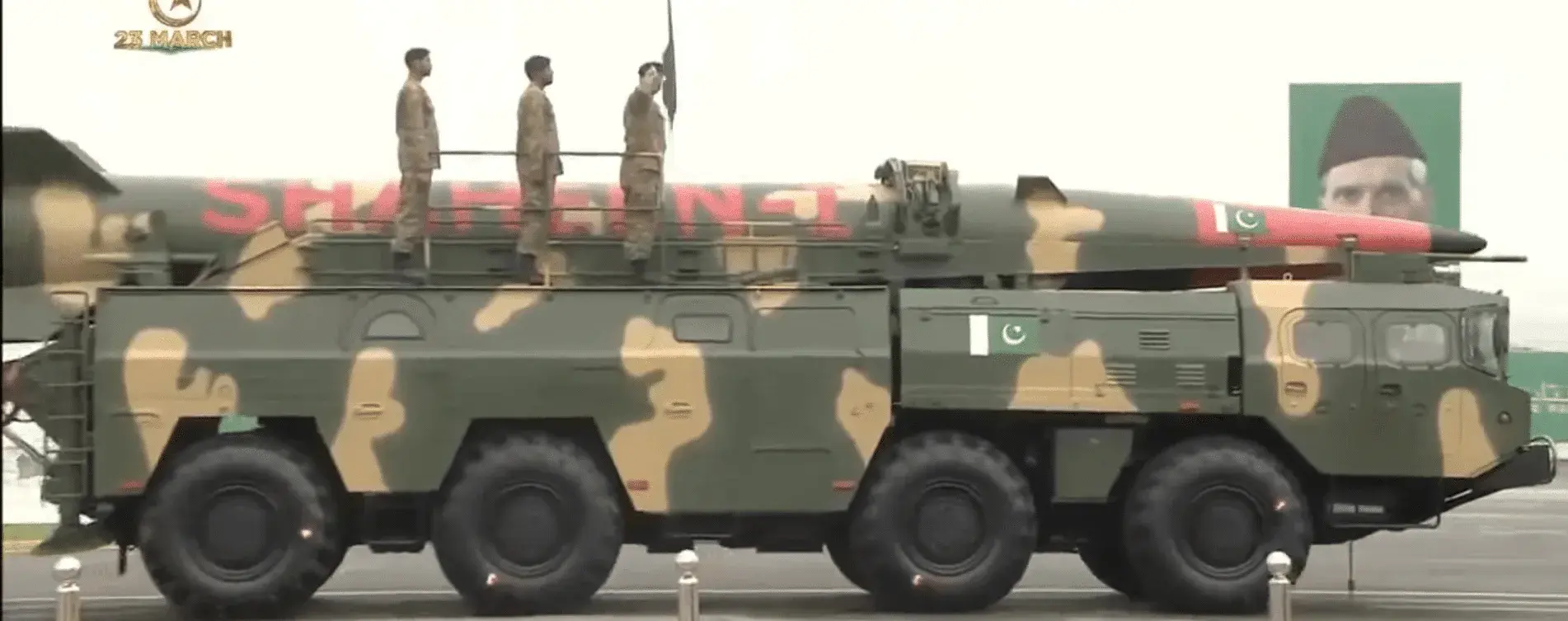
8) Ghauri (HATF 5)
The Ghauri (Hatf 5) is a Pakistani medium-range, road-mobile, liquid-fueled ballistic missile. It can carry a 700 kg warhead up to 1,500 km. Hatf 5’s range and nuclear capability give it the ability to hold targets deep within Indian territory at risk, making it a core part of Pakistan’s strategic missile forces. The Ghauri 2 is a medium-range, road-mobile, liquid propellant ballistic missile. It is a longer ranged variant of the Hatf 5, developed by replacing the heavier steel construction with an aluminum alloy and using improved propellants. It is expected to have a range of at least 1,800 km.
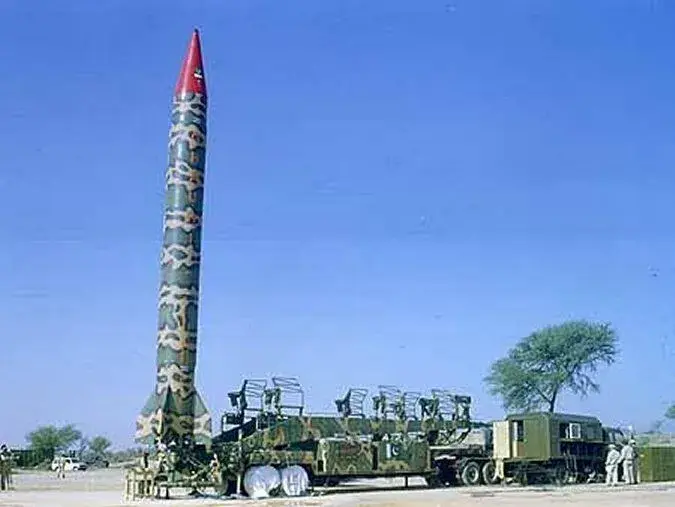
9) Shaheen 2 (HATF 6) 2000 KM Range
The Shaheen 2 (Hatf 6) is a Pakistani medium-range ballistic missile. It appears to be a two-stage version of the Shaheen 1 design, using a modified Shaheen 1 stage as the second stage motor and RV. It is believed that the Shaheen 2 is derived from the People’s Republic of China (PRC)-developed M-18, though this has not been confirmed. Pakistan first displayed the Shaheen 2 was in March 2000 and conducted its first flight test in March 2004. Several subsequent tests have taken place, with a final “training launch” occurring in November 2014, after which the missile became operational.
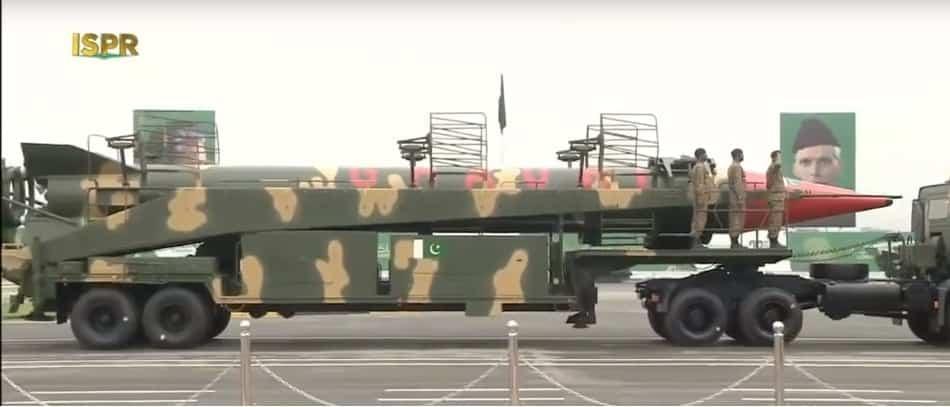
10) Shaheen 3
The Shaheen 3 missile is a two-stage, solid-fueled medium-range ballistic missile in development by Pakistan. The missile is reportedly capable of carrying both nuclear and conventional payloads to a range of 2,750 km, which would make it the longest range missile in Pakistan’s strategic arsenal.1 It was first publicly displayed during a military parade in March 2016.2 The Shaheen 3 is road-mobile and reportedly mounted on a Chinese transporter erector launcher.
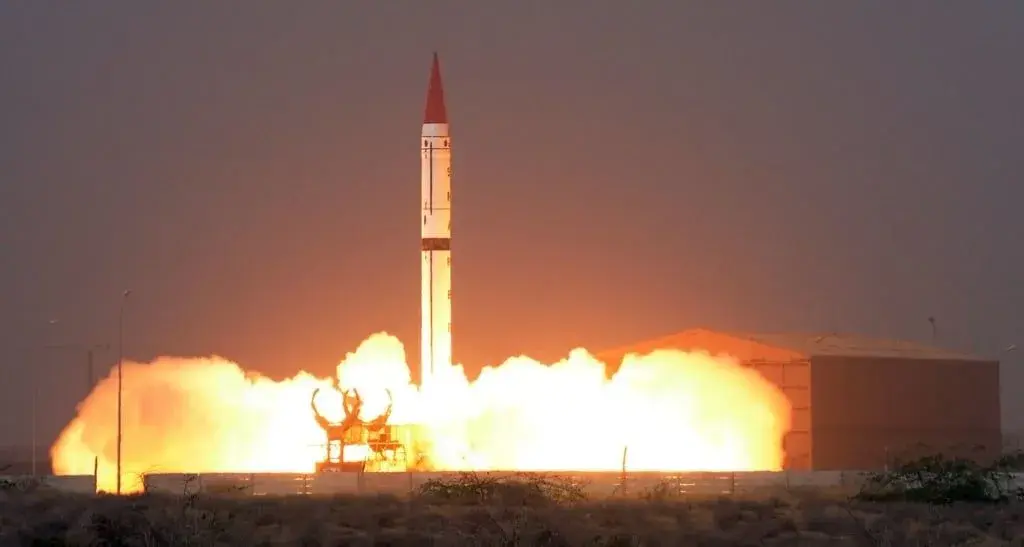
11) Ababeel
The Ababeel is Pakistan’s first surface-to-surface medium range ballistic missile (MRBM), reportedly capable of carrying Multiple Independently Targetable Re-entry Vehicles (MIRVs). The three-stage, solid-fuel missile was unveiled in a test on January 24, 2017.This distance fell well short of the missile’s reported maximum range of 2,200 km, indicating that the test’s purpose could have been to evaluate other aspects of the missile’s design. A press release from Pakistan’s Inter Services Public Relations office underlined that rather than flying to maximum range, “the test flight was aimed at validating various design and technical parameters of the weapon system.”
